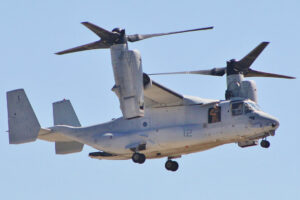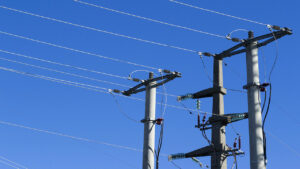ADB urges PHL to boost investments in agri, energy

MILAN, Italy — The Asian Development Bank (ADB) said the Philippines can benefit from shifting trade dynamics if it can make bigger investments in key sectors like energy and agriculture to boost its capacity for trade.
“It’s a multi-faceted agenda, but I think there’s a lot of potential for the Philippines both in a regional market, but also globally,” ADB Vice-President for Operations in East and Southeast Asia and the Pacific Scott Morris said at a media briefing on Tuesday.
“But so much of the future ambition for the country, including increasing its overall exports within the region globally, is making the domestic investments that will better enable that.”
The Philippines is an outlier in terms of direct exposure to the tariffs, Mr. Morris said.
Compared with its neighbors, the Philippines was relatively spared from the United States’ steep reciprocal tariffs, as it was slapped with a 17% rate. This is the second-lowest tariff in the region, after Singapore’s baseline 10% duty.
These tariffs have been put on pause until July, though the baseline rate of 10% remains in effect.
“But fundamentally, on these issues of export, import, overall trade orientation, I think the Philippines government recognizes the need to be more competitive. A big part of our agenda is on core competitiveness issues,” Mr. Morris said.
“How does the Philippines, as a market, make itself more attractive for foreign direct investment? That’s been a leading priority and attached to that is a wide range of issues.”
He cited the need for the country to invest in high-quality transport infrastructure and improve the regulatory environment, especially related to the energy sector.
“How do you ensure that you have affordable and sustainable energy for a growing economy? That is a leading issue for the Philippines right now.”
Mr. Morris also highlighted the need to ramp up investments in agriculture.
“Within the agricultural sector, for example, there needs to be stronger investments in the transport side of that, so that agricultural producers can get product to market more efficiently, and that will enable more export growth overall.”
Meanwhile, Mr. Morris said the Association of Southeast Asian Nations (ASEAN) should work to secure further cooperation to cushion the impacts from these tariff policies.
“I think each country within ASEAN is seeking to engage bilaterally with the US, but our message to the region is to use this opportunity to forge greater regional integration,” he said.
“It is always, in our view, the best path forward for each country in the region to be looking for greater levels of integration that can start within ASEAN. There’s a robust agenda here, not just more trade within the region per se, but even addressing the physical infrastructure needs around a more integrated regional economy.”
He said there have been significant energy commitments in the region, such as the ASEAN Power Grid.
“There’s a wide range of these sorts of activities that ASEAN countries can be looking at. Even on the human side, a greater flow of people across the region, easier flow, fewer barriers to entry, can forge a stronger regional economy and stronger national economies within that. We’re excited to be supporting all those initiatives.”
Economies can also seek to diversify their markets not just within the region, but globally too, Mr. Morris said.
“For countries in the region, they can be thinking about other regions, other large national economies. I think all of that needs to be on the table. I think there is an orientation toward strengthening through formalized trade agreements.”
“That can always be a very constructive path. But absolutely, we think in economic terms, you have to think about where the other large regional economies are, national economies, and how those ties can be strengthened for the ASEAN countries,” he added. — Luisa Maria Jacinta C. Jocson




